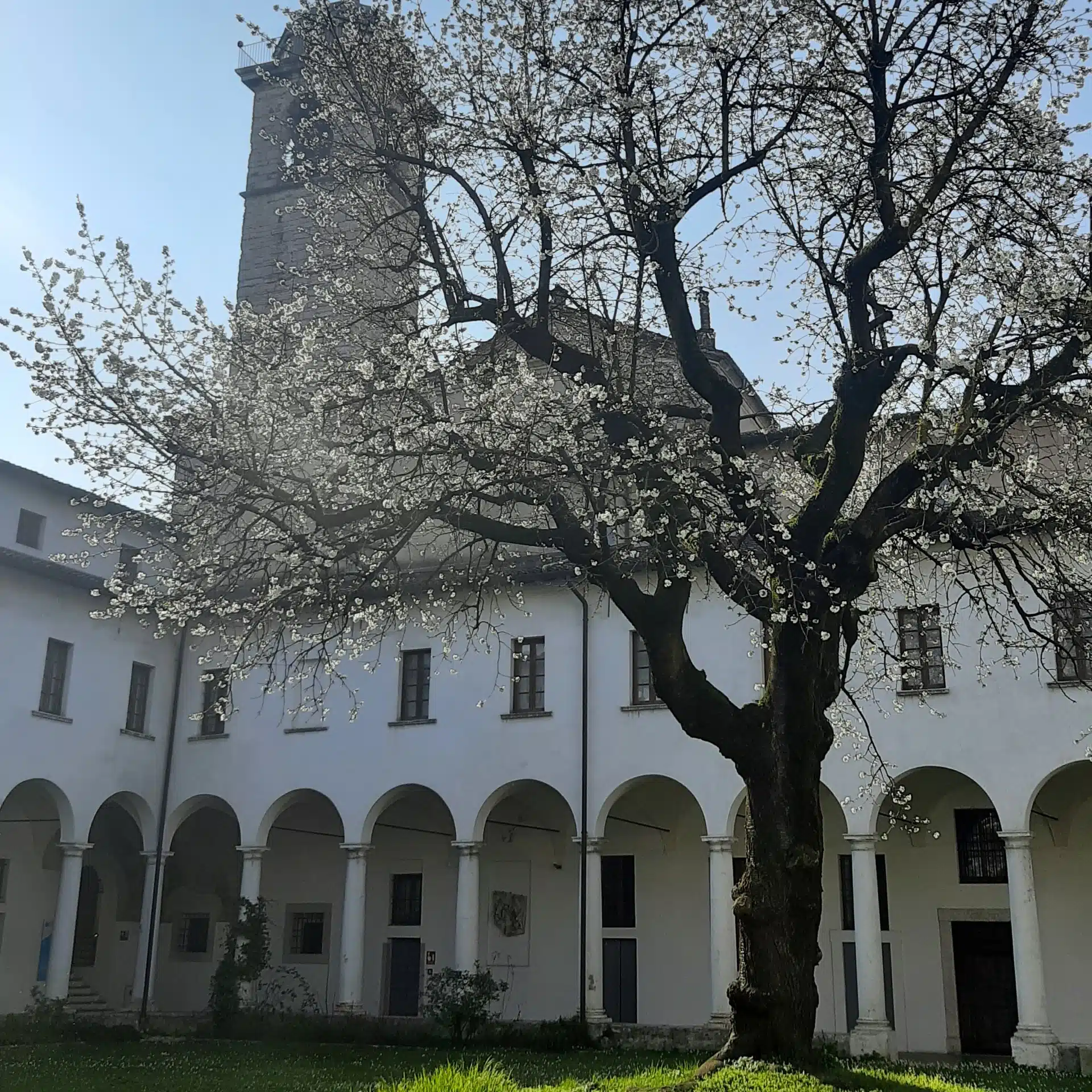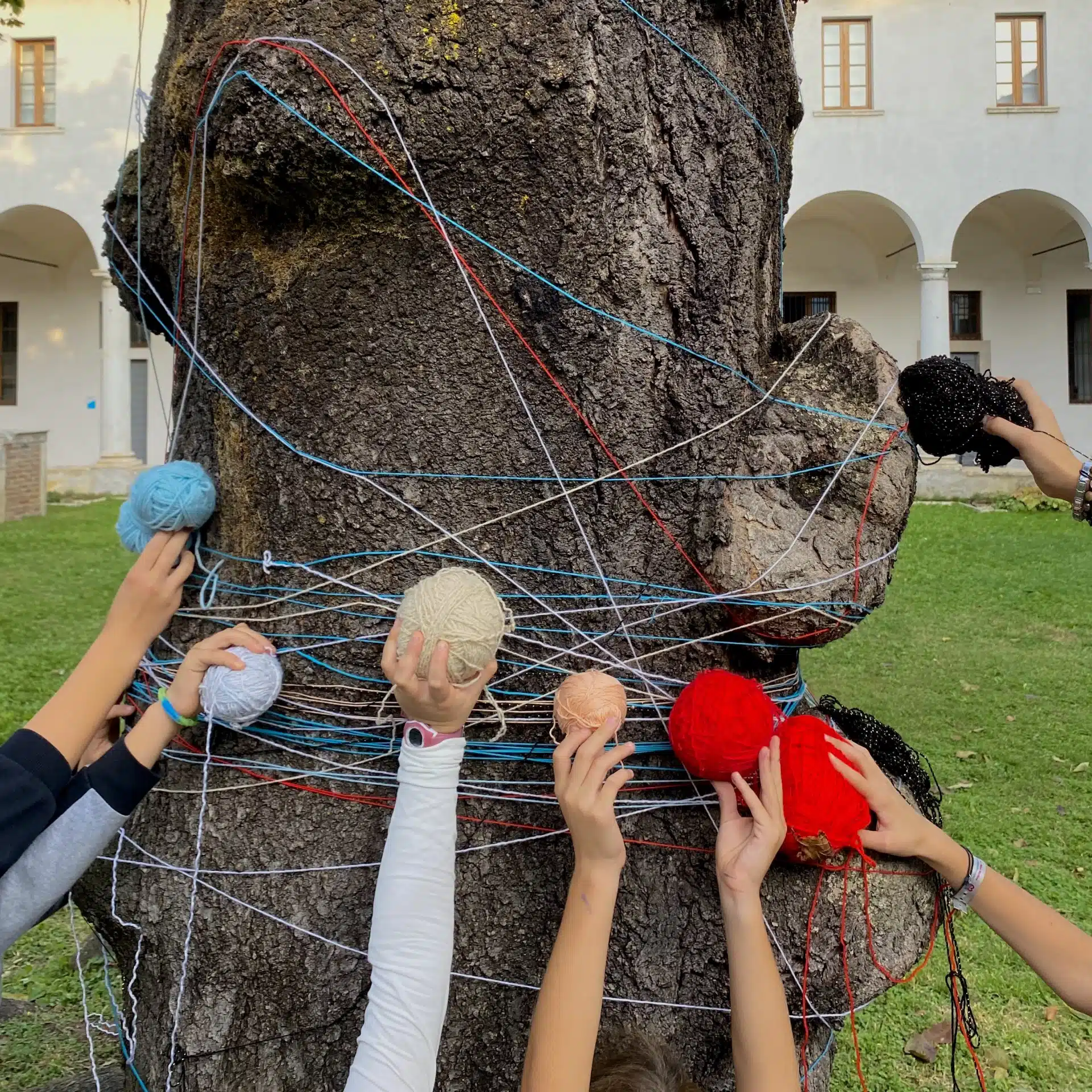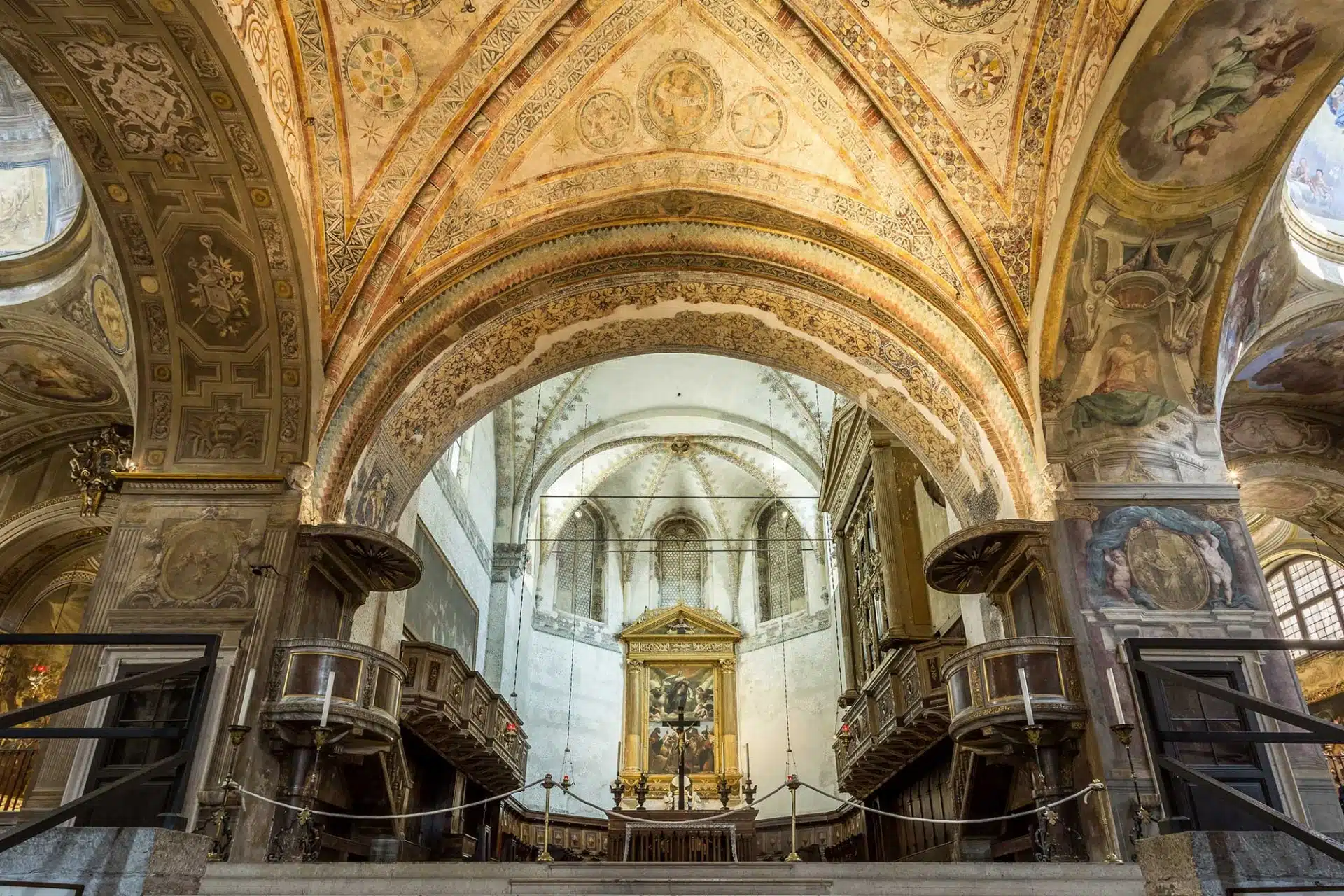Antifonario Ms. 4D
Autore: Giovanni Pietro Birago (Milano tra il 1440 e il 1450-dopo il 1513) Membranaceo - 566x400 mm Provenienza: Brescia, Biblioteca Capitolare del Duomo -
L’Antifonario ms. 4D proviene dalla Biblioteca Capitolare del Duomo Vecchio di Brescia. È uno dei diciotto corali commissionati tra il 1436 e il 1478 dal “Massarius Fabricae de Dom” Bartolomeo Offlaga, su patrocinio del Consiglio Comunale e del vescovo Domenico Dominici.
Caduti in disuso in seguito all’evoluzione e alla trasformazione della liturgia e della musica, rimasero nella Biblioteca nonostante il suo smembramento nel 1797 ad opera della Repubblica Cisalpina.
Su iniziativa di Paolo Guerrini, vennero depositati nella Pinacoteca Tosio-Martinengo di Brescia fino al 2018, quando furono esposti al Museo Diocesano di Brescia.
Questo Antifonario contiene le antifonie della liturgia diurna e notturna dalla Vigilia della Natività di San Giovanni Battista (23 giugno) alla Festa della Trasfigurazione del Signore (6 agosto).
Il testo è scritto in gotica corale italiana ad inchiostro nero su rubrica rossa. È distribuito su cinque righe alternate a cinque tetragrammi ad inchiostro rosso con notazione musicale quadrata realizzata ad inchiostro nero. Nei margini laterali compaiono dei rimandi o delle ripetizioni del testo posteriori di almeno due secoli.
L’ornamentazione dell’Antifonario è costituita da più di 600 lettere iniziali miniate dominate dai colori verde, azzurro, rosa, vermiglio e arancione, con lumeggiature bianche o dorate. Sono per lo più capilettera fitomorfi con foglie, fiori e frutti che si espandono fuori dal perimetro della lettera. In alcuni casi si intravedono putti, vasi, colonne o monete di gusto antiquario.
Delle altre iniziali, quattro sono istoriate, otto riportano lo stemma di Brescia, settantatré sono figurate e quattordici presentano animali come uccelli, pesci o draghi minacciosi che fuoriescono dai campi. Le restanti sono filigranate con inchiostri verde, nero e ocra.
Due lettere, la S della parola “Surge” e la L di “Lux” riportano la firma di Giovanni Pietro da Birago, riconosciuto già da Emma Calabi nel 1938 come autore di tutti e diciotto i corali.
Gli scenari delle iniziali istoriate e figurate sono descritti con particolare minuzia descrittiva. Un esempio si può trovare nella scena della Visitazione al c. 124r. Un loggiato di gusto classicheggiante si apre su un paesaggio collinare con di alberi filiformi, descritti con grande precisione prospettica ispirata a Vincenzo Foppa.
Gli ambienti interni sono caratterizzati da elementi classicheggianti come colonne, archi e rilievi riprodotti con fantasia e con tinte che cercano di imitare diverse materie.
I personaggi, solitari o calati in scene complesse, sono dotati di una propria individualità espressiva, come Il San Paolo del c. 96. Giovanni Pietro Birago lo descrive in una posa statica, accentuata dalle ampie lumeggiature in bianco, e mette in risalto le rughe sul volto.
Le varie espressioni vengono declinate in gesti calibrati ma risoluti che donano ulteriore spessore ai personaggi, come avviene nella scena della Natività di Maria al c. 284r. Qui, Giovanni Battista Birago si attarda ad esplorare le espressioni più diversificate, dalla stanchezza di Sant’Anna allo stupore delle ancelle.
Impressionante è anche la monumentalità della donna raffigurata di spalle mentre si china a porgere la neonata a Sant’Anna. L’artista accentua il suo movimento e la sua fisicità con un panneggio molto aderente, quasi bagnato.











